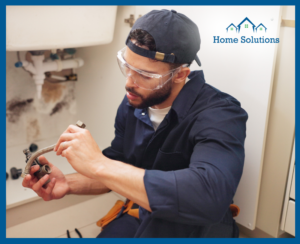If your rental property has been sitting vacant for an extended period, it’s time to reassess your rental strategy. Several factors can hinder the rental process, from pricing and marketing to property condition and tenant screening. We will help you explore some key reasons why your home may not be rented and provide actionable tips to enhance its marketability.
One of the worst feelings as a landlord or property manager is watching a rental sit on the market week after week, month after month. Whether you are getting few to no leads or entirely unqualified leads, a property that remains vacant is costing you important profit.
While it can feel like an unsolvable puzzle when your rental sits vacant, the solution is likely well within your reach.
Following are six common reasons why your property isn’t renting and tactics for determining a solution.
1. Your rent price isn’t competitive.
An important aspect of leasing a property is pricing the rental accurately and competitively. Without an accurate price point, you might face a longer-than-normal vacancy.
First, do your own research on similar rentals in the area. Scour Craigslist, Zillow and other major rental listing websites. Create a document with the pricing of similar rentals in your area and find the average.
Another method when pricing your rental property is to purchase a rental comparison report. If you go this route, be sure to still do your own research into your rental property’s specific neighborhood.
While a price is simple to change, you should take the time to explore your other options prior to simply knocking dollars off the rent amount.
2. Your rental isn’t being seen.
One of the biggest mistakes new landlords will make is limiting how much effort they put into marketing their property.
Promotion should be far more than a sign in your yard. Over 50% of people living in rentals are under the age of 30, a demographic that turns to technology to find what they need. This means online marketing is key.
Not only should you be posting your rental across the web, you should also make sure your promotion is well written and paints the property in the best light possible. Include vital information, such as the following:
• Number of bedrooms and bathrooms.
• Square footage.
• Appliances included.
• Important policies.
• Cost of rent.
• Required deposit.
It is also important to include a gallery of photos with your listing. Take high-quality photos of each room when the property is clean and in good condition.
Often revamping your promotion of the property will be key in improving the amount of renter interest.
3. Your policies have restricted your market.
In highly competitive markets, your policies will play a huge role in how many people are interested in the rental. For example, if you need to set your property apart from others in the area, you might consider having a pet-friendly policy. By opening up the market to pet owners, you will see a drastic increase in the number of interested parties.
Consider your deposit amounts and lease terms as well. In a market where short-term rentals abound, you might need to adjust from a 12-month lease to a six-month lease or even change to month-to-month.
While you need to protect your property, you also need to weigh the cost of your vacancy against loosening your policies. Do your research and determine if your policies are actually costing you more than they are helping.
4. Your rental property isn’t appealing.
If you see a lot of interest in your property up front but after showing the space you see a decline in interest, it could be that the property itself at fault. Ask yourself what you would think about the property if you were seeing it for the first time. Consider everything from the curb appeal to the condition of the interior. Take time to repair items and invest in improvements.
Beyond appearances, consider what amenities other rentals in the area offer. Updated appliances can go a long way in not only garnering more interest in the property but also in keeping happy, long-term renters.
While improving the property is more costly than other items on this list, it can pay back over time if you invest wisely.
5. You are battling an oversaturated market.
In some cases, it can truly be the market you are in that is holding you back. Demand will play a role in how quickly you fill a vacancy.
While you cannot create a demand that does not exist, you can take into consideration the cycle of rentals in your area when creating lease policies. If, for example, you operate in a market influenced by the presence of a college, be sure you align your lease dates with the demand. Lock in tenants with a year-long lease that ends at the ideal time for you.
If you are already stuck in a dead spell of your market, consider tweaking some of the components mentioned above to secure a tenant. You might need to lower your price to get a tenant in mid-February, but you can sign a lease that ends in July so you can remarket with a higher price in the prime rental season.
6. Your rental isn’t in an ideal location.
Where your rental property is located will determine a lot about the tenants interested in the property. Of all the items on this list, this is the least possible thing to change. However, there are still a couple of valuable ideas to keep in mind.
First, learn from your mistakes. Be sure during the buying process that you truly understand the market for the specific area.
Next, if you own a property and realize the location is the main issue, recognize you will need to make up for it in other ways. For example, someone might be willing to be in a less desirable part of town if the property is dog-friendly with a fenced-in yard. Make the best of what you have by changing what you can.
The bottom line is that if your rental property sits vacant, you are losing money. Take the time to assess what you are doing wrong and have the humility to learn from your mistakes. Never leave the rental process up to chance. Landlording is far more than a hobby — it truly is a business.
Ensure your property is always in top condition. Our comprehensive property management services can help you protect your investment and increase its value. Call us today at (954) 545-3027 and follow us on Instagram @homesolutionsp.































